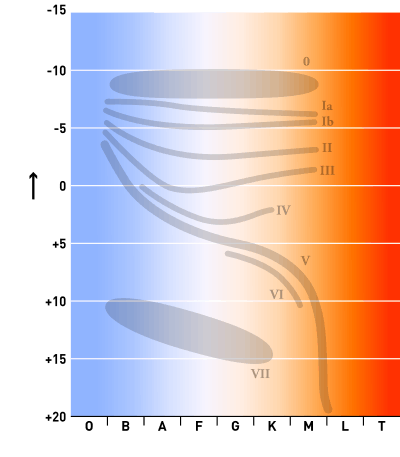Bright giant
Bright giants are stars of luminosity class II in the Yerkes spectral classification. These are stars which straddle the boundary between ordinary giants and supergiants, based on the appearance of their spectra.[1] The bright giant luminosity class was first defined in 1943.[2]
Example bright giants
Well known stars which are classified as bright giants include:
- Alpha Carinae (Canopus): a white (A-type) bright giant
- Epsilon Canis Majoris (Adhara): a blue-white (B-type) bright giant
- Omicron Scorpii: a white (A-type) bright giant
- Theta Scorpii (Sargas): a white (F-type) bright giant
- Beta Draconis: a yellow (G-type) bright giant
- Beta Capricorni (Dabih): an orange (K-type) bright giant
- Alpha Herculis (Rasalgethi): a red (M-type) bright giant
- Gamma Canis Majoris (Muliphein) a (B-Type) bright giant
gollark: Some may now be safe as this uses seemingly all available computational power.
gollark: I *am* compiling Rust code. NONE are safe.
gollark: That seems like a great way to convince people that you haven't broken the law, yes.
gollark: ... no.
gollark: Again. In Rust. With 102947194129846 feature. And also -124081748917248978 feature.
See also
References
- Abt, Helmut A. (1957). "Line Broadening in High-Luminosity Stars. I. Bright Giants". Astrophysical Journal. 126: 503. Bibcode:1957ApJ...126..503A. doi:10.1086/146423.
- Steven J. Dick (2019). Classifying the Cosmos: How We Can Make Sense of the Celestial Landscape. Springer. p. 176. ISBN 9783030103804.
This article is issued from Wikipedia. The text is licensed under Creative Commons - Attribution - Sharealike. Additional terms may apply for the media files.
